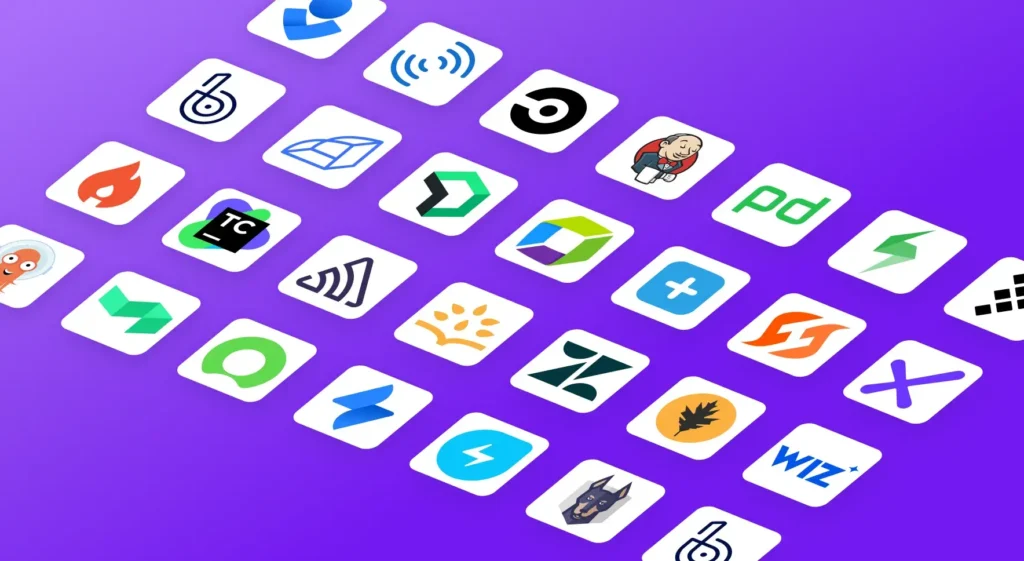In this article
Your $150k senior engineer just spent two hours figuring out why the build broke because someone renamed a file from “utils.js” to “Utils.js” on a case-sensitive server.
That’s an hour of their time down the drain. Multiply that by every developer, every day, and you’re running the world’s most expensive tech support department.
Developer productivity engineering (DPE) attacks this problem systematically. DPE teams build systems that prevent these time sinks from happening in the first place. And they treat developer frustration like any other engineering problem worth solving.
Below, we’ll break down the key principles of DPE and show you how to build systems that don’t hate your developers.
What is Developer Productivity Engineering?
What is Developer Productivity Engineering?
Developer productivity engineering (DPE) is an engineering-first approach that optimizes every aspect of the developer experience, from writing code to seeing it run in production.
Traditional approaches try to fix slow development with more meetings, better processes, or new project management tools. DPE teams work differently:
- First, they measure your development workflows and analyze the data to find the biggest time-wasters and most frequent failures.
- Next, they outline concrete problems like slow CI pipelines, unreliable test suites, and painful deployment processes.
- Then, they build custom tools and automation that directly fix these specific bottlenecks.
- They give developers data and self-service tools to solve problems without waiting for help
Put simply, DPE doesn’t ask developers to change how they work. It changes the systems they work with.
The specific DPE approach varies by company size. Small startups might have one or two engineers wearing the DPE hat alongside their regular duties.
Mid-size companies typically create a dedicated DPE team of 2-4 engineers, while large tech companies go all-in with massive investments.
For example, Netflix has an 80-person developer productivity engineering team within its 150-person platform organization.
Kathryn Koehler, director of productivity engineering at Netflix, explained how this works. Her team owns the entire inner development lifecycle. From writing code through to integration, plus the end-to-end developer experience.
They actively monitor build times, outline patterns in test failures, and build tools that help developers troubleshoot issues on their own. When a developer hits a problem, they get detailed data about what went wrong instead of having to guess or re-run broken builds.
The result: Developers spend more time writing code and less time fighting their tools.
Why Does It Matter Now?
Why Does It Matter Now?
Software development processes have become dramatically more complex over the past decade, and the old ways of working aren’t keeping up.
Here’s why DPE is so important these days:
- Development complexity has exploded: Building quality software today means juggling microservices, cloud infrastructure, API integrations, and countless open-source libraries. Engineering leaders report that 58% of developers lose more than 5 hours per week to unproductive work that could be automated (or eliminated).
- Remote work changed everything: The informal knowledge sharing that used to happen at coffee machines and in hallway conversations is gone. You can’t just tap someone on the shoulder to ask why the build is failing. DPE tackles this with high-quality methodologies that work regardless of location, time zone, or whether your teammate is available on Slack.
- The talent war is brutal: Technical debt is the top frustration for 63% of professional developers, and top engineering talent simply won’t tolerate slow builds, flaky tests, and broken toolchains. Developer experience has become a competitive advantage for hiring and retention.
- The competitive pressure for faster time-to-market: Companies that can’t ship fast lose market opportunities. Yet, most development teams are moving slower despite better tools. The 2024 DORA report found that speed and stability have actually decreased due to AI tools — proof that you can’t just throw technology at productivity problems and expect them to disappear.
- Burnout is reaching crisis levels: 83% of developers report experiencing burnout. When developers spend more time figuring out broken CI pipelines than writing code, they lose the creative satisfaction. DPE helps by automating away the grunt work.
The Core Components of a DPE Strategy
The Core Components of a DPE Strategy
Every effective DPE program focuses on the same core areas. Let’s walk through what you need to get right to make a real difference for your developers:
1. Developer Experience (DX) & Tools
What it is: Developer experience is how smoothly developers can go from idea to running code. This includes build systems, testing frameworks, deployment pipelines, development environments, and the tools that connect them all together.
Why it matters: Poor DX is expensive. When developers spend time waiting for slow builds, debugging flaky tests, or setting up environments, they can’t deliver value. Companies with good DX ship features faster and retain talent better.
Key elements:
- Standardized development environments: Everyone gets the same setup that works reliably, whether they’re on a MacBook or a Linux machine.
- Fast, predictable build systems: Builds should take minutes, not hours, and work the same way every time.
- Reliable testing infrastructure: Your tests catch real bugs without false positives that waste developer time.
- Smooth deployment processes: Processes from code commit to production should be automated and reversible.
- Documentation that developers can rely on: Searchable, up-to-date, and organized around workflows rather than features.
- Self-service capabilities: Developers don’t need to file tickets for basic tasks like creating databases or deploying to staging.
PRO TIP 💡: You can use Jellyfish’s development environment analytics to see which setup steps cause the most onboarding delays. Track how long it takes new developers to complete their first commit across different teams, then optimize the slowest parts of your standardization process.
2. CI/CD & Automation
What it is: Continuous Integration and Continuous Deployment (CI/CD) automates the process of getting code from a developer’s machine into production. This includes automated testing, building, security scanning, and deployment processes that run without human intervention.
Why it matters: When a pipeline takes 45 minutes to run, developers either wait (losing momentum) or context-switch to other work (losing focus). Broken pipelines are even worse because they block entire teams from shipping code. Companies with optimized CI/CD can deploy multiple times per day.
Key elements:
- Automated tests run at every stage: Unit tests trigger on every commit, integration tests run on pull requests, and end-to-end tests execute before deployment. When tests fail, the pipeline stops and blocks broken code from production.
- Pipelines provide fast feedback: Good pipelines complete in under 10 minutes, so developers get instant results. Slow pipelines encourage developers to batch changes together, which makes bugs even harder to track down.
- Security and compliance automation: Vulnerability scans, dependency checks, and compliance validation run directly in pipelines. Policy-as-code prevents security issues from reaching production.
- Progressive deployment strategies: Feature flags and blue-green deployments let you release safely to small groups first.
- Pipeline insights and debug tools: Rich logs, timing breakdowns, and failure analysis tell developers exactly what went wrong and where.
3. Accelerated Feedback Cycles
What it is: Accelerated feedback cycles shorten the time between when a developer makes a change and when they learn if it works correctly. DPE teams work to compress these cycles from hours or days down to minutes or seconds, so developers can spot problems early.
Why it matters: When developers wait hours (or even days) to see if their code works, they either sit idle or switch to other tasks. By the time they get feedback, they’ve lost context about what they were building. Worse, late feedback means bugs pile up and fixing issues becomes exponentially harder.
Key elements:
- Instant local feedback: IDEs and editors catch syntax errors and type mismatches as developers write, with intelligent autocomplete that reduces common mistakes.
- Sub-minute test execution: Unit tests that run in seconds, so developers can verify changes immediately without breaking their train of thought.
- Real-time code review: Automated code analysis outlines potential issues immediately when developers open pull requests. Reviewers get clear context about what changed and why.
- Preview environments: Temporary environments that come up automatically for each pull request, so team managers can see and test changes before they merge.
PRO TIP 💡: Monitor your actual feedback loop times with Jellyfish’s workflow analytics to see where developers lose momentum. The platform shows you whether slow code reviews, delayed test results, or lengthy deployment validation are breaking your developers’ flow state.
4. Observability & Data Insights
What it is: Observability and data insights give DPE teams a clear view of how their development systems actually work. This means tracking build times, test reliability, deployment success rates, and how developers move through their workflows.
Why it matters: You can’t streamline what you can’t measure. Most development teams have no idea where time gets wasted in their workflows. They might think builds are slow, but they don’t know which steps take the longest or how often tests fail for random reasons.
Key elements:
- Logs that developers can rely on: Apps write logs with correlation IDs, user context, and structured data that developers can search and filter easily.
- Performance monitoring to find problems: Developer experience tools track response times, error rates, and resource usage across all environments. Developers see exactly which endpoints run slow and which database queries create issues.
- Tracing for complex systems: When requests travel through multiple services, tracing tools show the complete journey with timing data for each step.
- Self-service dashboards: They let developers and teams see their own KPIs and metrics without having to bother someone else for reports.
- Smart alert system: Monitoring systems catch problems and alert the right people with enough context to know what’s happening.
Building a Developer Productivity Engineering Team
Building a Developer Productivity Engineering Team
Once you know what DPE looks like, the next question is how to build a team that can deliver it. Here’s what you need to know about putting the right people in place:
The Mission and Mandate
Your DPE team needs a mission that’s more specific than “make developers more productive.” The teams that make a difference pick concrete problems and attack them.
Look at what’s driving your developers crazy right now:
- Are builds taking 30 minutes when they should take 5?
- Do deployments fail 20% of the time?
- Is onboarding new developers a 2-week nightmare?
Google’s approach shows how to get specific. Their research team encourages stakeholders to define three clear goals – speed (how quickly engineers complete tasks), ease (how much cognitive load tasks require), and quality (what level of code the team produces).
Your DPE team also needs clear ownership and authority:
- Own the developer experience end-to-end: They control build systems, deployment pipelines, testing infrastructure, and environments that developers use daily.
- Treat developers as customers: Actively collect feedback, prioritize developer pain points, and measure satisfaction like any product team would.
- Use data to drive decisions: Track metrics on build times, deployment success rates, and developer productivity.
- Have authority to make changes: The power to modify systems across teams, push back on requests that create tech debt, and roll out changes that affect multiple engineering groups.
Typical Roles and Responsibilities
The best DPE teams bring together different technical specialists who each focus on their own piece of the developer experience.
You can start with 2-3 people who cover the basics and scale as your engineering team grows. A good rule of thumb is to have one DPE person for every 15-20 developers.
The exact roles you need depend on your company size and what’s broken:
| Role | Key responsibilities |
| DPE Software Engineer |
|
| Site Reliability Engineer (SRE) / Platform Engineer |
|
| Developer Experience Researcher |
|
| DevOps/Release Engineer |
|
| DPE Team Lead/Manager |
|
This is a general framework you can follow based on team size:
- For smaller teams (under 50 developers): Start with a DPE software engineer and a DevOps engineer. One person can often wear multiple hats at the beginning.
- For mid-size companies (50-100 developers): Add a platform engineer to handle infrastructure complexity and consider a developer experience researcher who can measure what’s working. At this scale, developer frustrations become harder to track informally.
- For larger organizations (200+ developers): Build out the full team with dedicated specialists and a team lead who can coordinate across multiple engineering teams.
Organizational Models
How you organize your DPE team within your company structure matters as much as who you hire. But there’s no one-size-fits-all solution.
These are the most common ways teams organize developer productivity engineering:
- Centralized DPE team: This is the most common model where the DPE team operates as a separate unit that serves all engineering teams. They have clear ownership of developer tools and infrastructure, so it’s easier to standardize processes. The downside is that they can become disconnected from day-to-day developer needs.
- Embedded DPE engineers: Some organizations place one or two DPE-focused engineers within each product team to tackle productivity issues locally. This model prevents the “ivory tower” problem, where centralized teams build tools nobody wants to use.
- Hybrid model: A small central DPE team (2-5 people) that sets standards and builds shared tools, with embedded engineers in larger product teams. The central team provides expertise and consistency while embedded engineers handle team-specific needs and act as liaisons.
Measuring the Success of Your DPE Initiative: Key Metrics to Track
Measuring the Success of Your DPE Initiative: Key Metrics to Track
Once your DPE team starts shipping improvements, you’ll need to prove they’re making a difference.
These are the developer experience metrics that show whether you’re moving the needle or just keeping busy:
Speed & Throughput Metrics
Speed metrics are the most immediate way to see DPE impact. They show exactly how much time you’re saving developers every day:
- Build time: How long it takes to compile, test, and package your code from commit to deployable artifact. Fast builds (under 10 minutes) keep developers in flow state.
- Deployment frequency: How often your team successfully deploys code to production, whether daily, weekly, or multiple times per day.
- Cycle time for changes: The total time from when code is committed to when it’s running in production and available to users.
- Test execution time: How long it takes to run your full test suite, including unit, integration, and end-to-end tests.
- Time to first commit (new hires): How quickly new developers can set up their environment and make their first meaningful code contribution.
Stability & Quality Metrics
Quality metrics show whether your speed improvements come at the cost of reliability, or if you’re achieving the holy grail of fast and stable, continuous delivery:
- Deployment success rate: The percentage of deployments that complete successfully without any rollbacks or hotfixes.
- Mean time to recovery (MTTR): How quickly you can restore service when something breaks in production. Fast recovery times show that your team has good monitoring, debugging tools, and rollback procedures.
- Build success rate: Track the percentage of builds that complete successfully on the first try.
- Technical debt ratio: The percentage of development time spent on maintenance, bug fixes, and refactoring versus new feature development.
- Production incident frequency: How often production issues occur that impact users or demand engineer intervention.
Developer Experience (DevEx) & Satisfaction Metrics
Developer satisfaction metrics show you whether your technical improvements actually make work better for people:
- Developer satisfaction score: Survey developers quarterly on tool satisfaction, workflow efficiency, and general experience using a 1-10 scale.
- Tool net promoter score (NPS): Ask developers how likely they are to recommend your development tools to other engineers.
- Context switching frequency: Monitor how often developers switch between different tools, environments, or tasks during their workday. Excessive context switching kills productivity and means you’re dealing with poorly integrated toolchains.
- Documentation satisfaction: Ask devs whether they can find the information they need quickly and whether documentation stays current.
- Developer retention rate: Track how long developers stay on your team compared to industry benchmarks.
Getting Started: Your First 90 Days in DPE
Getting Started: Your First 90 Days in DPE
The first 90 days set the tone for your entire DPE initiative. Move too fast and you’ll break things developers rely on. Move too slow and you’ll lose credibility before you can prove your worth.
This roadmap balances quick wins with solid foundation work:
Month 1: Listen and Learn
- Survey your developers about their biggest pain points: Send out a simple survey asking what slows them down most during their typical workday. Focus on concrete problems like slow builds, messy tests, or complex deployments.
- Shadow developers through their daily workflow: Spend time with 3-4 developers from different teams, watching them code, test, and deploy. You’ll find friction points that surveys miss, like awkward tool transitions or undocumented workarounds they’ve created.
- Audit your current build and deployment times: Measure baseline metrics for build duration, test execution time, and deployment frequency across all teams. Document everything, even if it’s embarrassing.
- Build relationships with key stakeholders: Meet with engineering managers, product teams, and infrastructure groups to understand their priorities and get buy-in for larger changes. Politics matter as much as technology in DPE success.
- Create regular feedback channels: Set up office hours, Slack channels, or regular surveys where developers can report problems. Make it easy for people to reach you when they’re frustrated.
Month 2: Quick Wins and Foundation Building
- Fix the most obvious and painful issues: Pick 1-2 problems that affect everyone and have clear solutions, like slow builds or unreliable test environments. Quick wins give you credibility and prove to developers that the DPE team delivers real, continuous improvements.
- Standardize development environments: Create consistent development setups using containers, scripts, or infrastructure-as-code. “Works on my machine” problems should become rare, not routine.
- Create detailed proposals for 3-5 high-impact activities: Write up specific improvement projects with clear problem statements, proposed solutions, effort estimates, and expected outcomes.
- Document your team’s charter and priorities: Write down what your DPE team owns, what success looks like, and how other teams can work with you. Clear communication prevents scope creep and unrealistic expectations.
Month 3: Scale and Measurement
- Set up DPE team rituals and processes: Create regular retrospectives, capacity planning sessions, and review cycles for your own team. You’re modeling the kind of systematic improvement you want to see across engineering.
- Launch your first major infrastructure improvement: Take on a bigger project like optimizing the CI/CD pipeline or building automated testing infrastructure. Pick something with a clear, measurable impact that multiple teams will benefit from.
- Start sharing knowledge and best practices across teams: Host lunch-and-learns, write internal blog posts, or create documentation that helps other teams adopt the improvements you’ve made.
- Create a roadmap for the next 6 months based on learnings: Use your first 90 days of data and experience to plan future actions with realistic timelines and resource requirements.
Powering Your DPE Initiative with Jellyfish
Powering Your DPE Initiative with Jellyfish
Building great solutions is only half the battle for DPE teams. The other half is knowing where to focus your efforts and proving that your work actually moves the needle.
Jellyfish is a software engineering intelligence solution that gives DPE teams the workflow visibility and data insights they need right out of the box.
The platform automatically connects to your existing development tools (GitHub, Jira, Slack, etc.) and shows you exactly where your biggest team productivity issues are hiding.
Here are some of the key benefits and features that DPE teams can expect:
- Automatically find the biggest blockers: Jellyfish analyzes data from your existing tools like Git, Jira, and CI/CD systems to outline exactly where developers lose time. You’ll know whether slow builds, lengthy code reviews, or unplanned work eat up the most developer hours.
- Comprehensive DORA metrics tracking: Jellyfish automatically measures key DORA metrics like lead time, deployment frequency, mean time to resolution, and change failure rate. This gives DPE teams the gold standard metrics for tracking software delivery
- Real-time team health insights: Jellyfish includes qualitative sentiment data alongside quantitative metrics, so DPE teams can track developer satisfaction and burnout risk. This lets them tackle problems before they turn into full-blown crises.
- Get the real story on your productivity tools: Sure, everyone’s buying developer tools and AI assistants, but are they actually making your team faster? Jellyfish shows you adoption patterns and whether those expensive productivity investments are worth the money.
- Prove DPE value to engineering leadership: Replace vague promises about “developer happiness” with concrete data about reduced build times, faster development cycles, and measurable time savings. Show executives exactly how DPE investments translate to faster feature delivery.
With Jellyfish, there’s no more begging developers to log their time or trying to figure out why last quarter’s “quick win” actually made things slower.
Book a demo and see how real data can turn your DPE team from the “we think this might help” group into the “we delivered 40% faster builds and here’s the proof” heroes.
Learn More About Developer Productivity
Learn More About Developer Productivity
- What is Developer Productivity & How to Measure it the Right Way
- 9 Common Pain Points That Kill Developer Productivity
- How to Improve Developer Productivity: 16 Actionable Tips for Engineering Leaders
- Automation in Software Development: The Engineering Leader’s Playbook
- 29 Best Developer Productivity Tools to Try Right Now
- 21 Developer Productivity Metrics Team Leaders Should Be Tracking
- AI for Developer Productivity: A Practical Implementation Guide
- How to Build a Developer Productivity Dashboard: Metrics, Examples & Best Practices
- Developer Burnout: Causes, Warning Signs, and Ways to Prevent It
- 10 Peer Code Review Best Practices That Turn Good Developers Into Great Ones
- Mitigating Context Switching in Software Development
About the author

Lauren is Senior Product Marketing Director at Jellyfish where she works closely with the product team to bring software engineering intelligence solutions to market. Prior to Jellyfish, Lauren served as Director of Product Marketing at Pluralsight.




